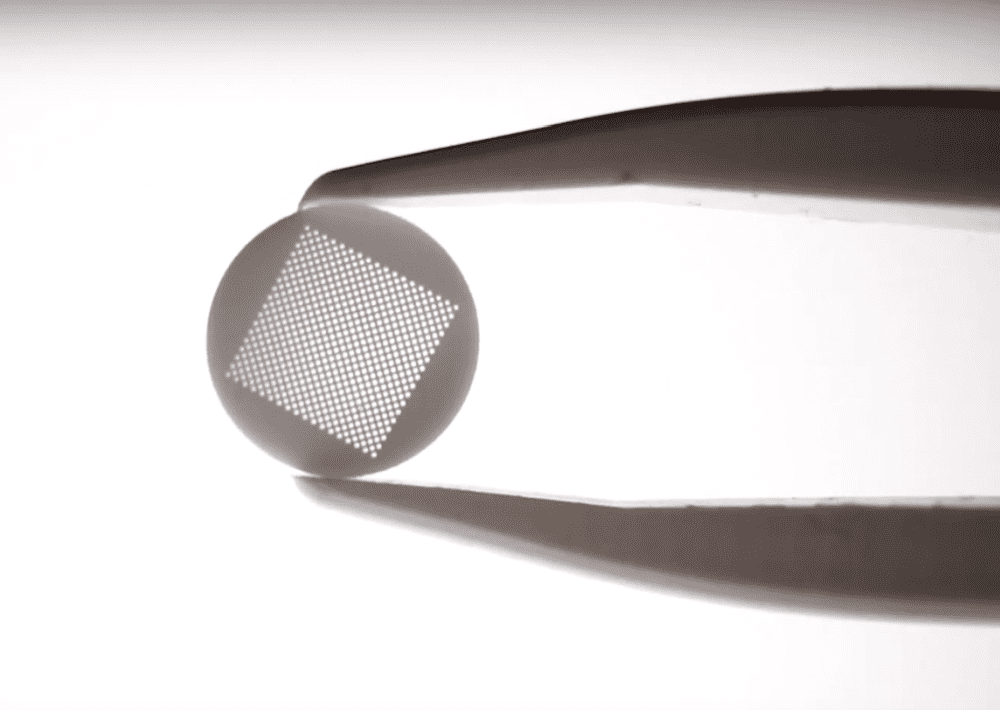
[Image above] Example of a vat polymerized ceramic created using Lithoz’s lithography-based ceramic manufacturing technology. Credit: Lithoz GmbH, YouTube
Of the various methods used to 3D print ceramic parts, vat polymerization techniques, specifically stereolithography, are a common choice for applications requiring smooth and detailed parts.
Vat polymerization techniques work by using a light source (typically ultraviolet) to selectively cure a photopolymer liquid resin containing ceramic particles into a solid layer using information from a CAD file. The part then undergoes thermal debinding and sintering processes to remove the polymer matrix and reach final density.
However, while vat polymerization techniques offer a high degree of detail and precision, the final ceramic parts often suffer from brittleness, which means they are confined to low stress applications.
To improve the mechanical properties of vat polymerized ceramics, researchers have extensively studied a range of factors that affect the photopolymerization process, such as resin type and light intensity and wavelength. (Reviews on the topic are available here and here.)
But while it is well known that concentration and optical properties of ceramic particles in the resin affect how light is scattered and absorbed, “a correlation of the size distribution of the ceramic particles with 1) the light–particle interactions and 2) the curing behavior of ceramic resins has not yet been fully described,” researchers write in a recent paper.
The researchers come from the University of Stuttgart in Germany. They are Wadih Yared, ACerS member and doctoral student, and Rainer Gadow, full professor and director of the Institute for Manufacturing Technologies of Ceramic Components and Composites.
In their study, Yared and Gadow looked to elucidate these correlations between particle size distribution (PSD) and polymerization kinetics of ceramic-filled photothermal resins. To do so, they selected four grades of alpha-aluminum oxide with different PSDs. Aluminum oxide was chosen due to its wide usage in refractories, ceramics, polishing, and abrasive applications.
Before creating the ceramic-filled resins, Yared and Gadow dispersed the different alumina powders in de-ionized water so they could evaluate the light–particle interactions using laser diffraction spectroscopy and UV/Vis spectrophotometry.
Then, they created the ceramic-filled resins using ultrasonication and a planetary centrifugal vacuum mixer to ensure good dispersal of the alumina powders in an acrylate-based photothermal resin. Following dispersion, they placed the ceramic-filled resins into a rheometer with a self-made photorheology accessory to measure the material’s curing kinetics.
Based on these experiments, Yared and Gadow determined that a smaller mean particle size results in a larger attenuation (i.e., reduction) of UV light, which corresponds to a lower photopolymerization rate. Based on this finding, which agrees with both theoretical and experimental results reported in the research literature, it is no surprise that photorheology measurements revealed larger particles generally resulted in faster polymerization rates.
However, ceramic resins with a larger mean particle size also demonstrated lower structural stability because larger particles sediment faster than their smaller counterparts, which results in incomplete layers and difficulties in printing. Additionally, ceramic particles with a smaller mean particle size generally exhibited a better sintering behavior because of their larger effective surface area.
Thus, choosing a ceramic powder with an optimum PSD is a function of multiple factors. Fortunately, “The findings presented here can be used as a guide for the selection of ceramic powders for the development of ceramic resins for vat photopolymerization,” Yared and Gadow conclude.
The paper, published in Ceramics International, is “The influence of particle size distribution on the curing behavior of ceramic-filled resins for vat photopolymerization” (DOI: 10.1016/j.ceramint.2022.11.193).
Author
Lisa McDonald
CTT Categories
- Basic Science
- Manufacturing


